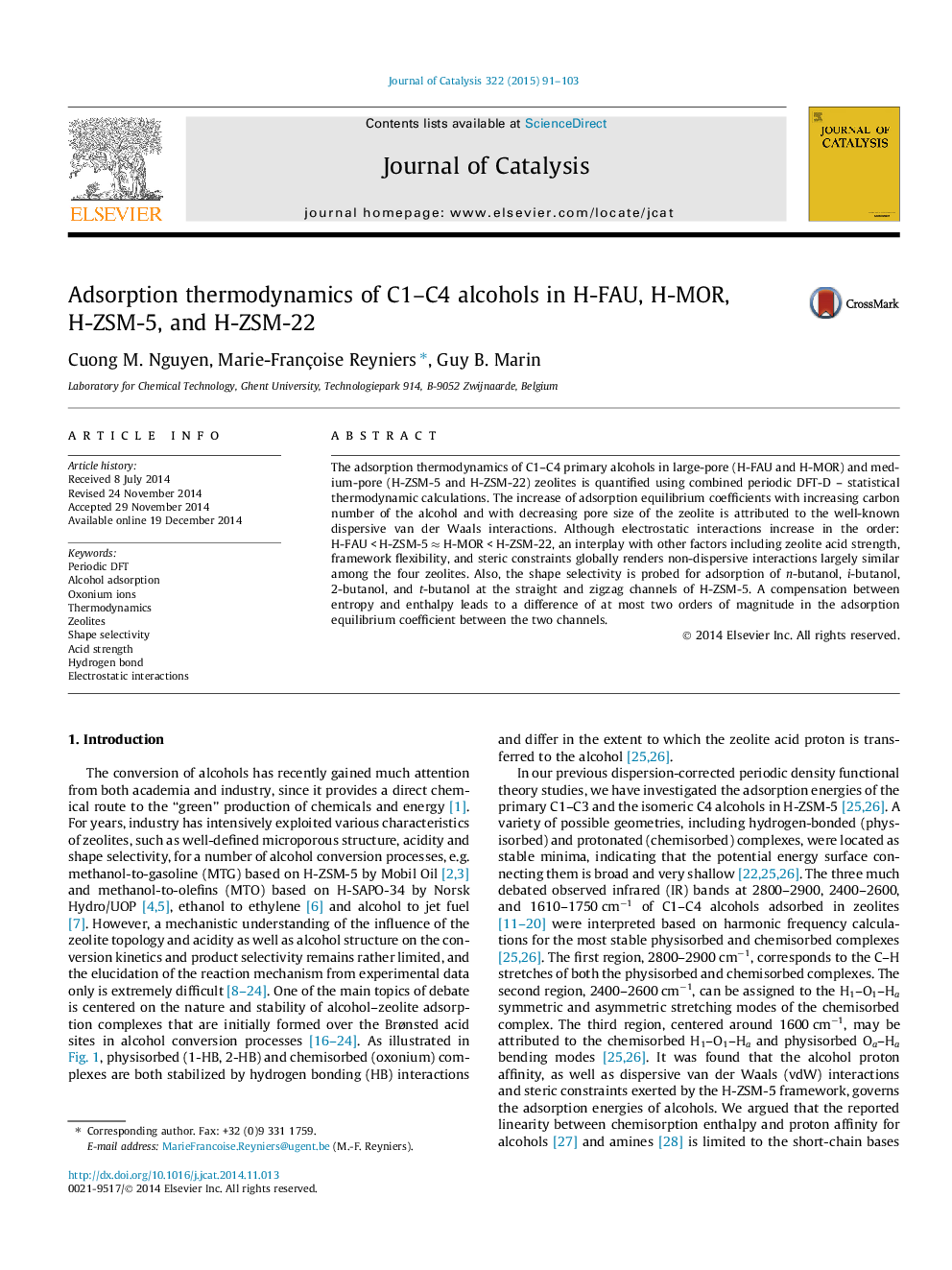| Article ID | Journal | Published Year | Pages | File Type |
|---|---|---|---|---|
| 60875 | Journal of Catalysis | 2015 | 13 Pages |
•Adsorption strength of alcohols in different zeolite frameworks is quantified.•Dispersive vdW interactions crucially govern adsorption strength of alcohols.•Long-range electrostatic interactions are decisive to stabilize ions in the pore.•An entropy–enthalpy compensation governs the shape selectivity in zeolite.
The adsorption thermodynamics of C1–C4 primary alcohols in large-pore (H-FAU and H-MOR) and medium-pore (H-ZSM-5 and H-ZSM-22) zeolites is quantified using combined periodic DFT-D – statistical thermodynamic calculations. The increase of adsorption equilibrium coefficients with increasing carbon number of the alcohol and with decreasing pore size of the zeolite is attributed to the well-known dispersive van der Waals interactions. Although electrostatic interactions increase in the order: H-FAU < H-ZSM-5 ≈ H-MOR < H-ZSM-22, an interplay with other factors including zeolite acid strength, framework flexibility, and steric constraints globally renders non-dispersive interactions largely similar among the four zeolites. Also, the shape selectivity is probed for adsorption of n-butanol, i-butanol, 2-butanol, and t-butanol at the straight and zigzag channels of H-ZSM-5. A compensation between entropy and enthalpy leads to a difference of at most two orders of magnitude in the adsorption equilibrium coefficient between the two channels.
Graphical abstractFigure optionsDownload full-size imageDownload high-quality image (144 K)Download as PowerPoint slide
